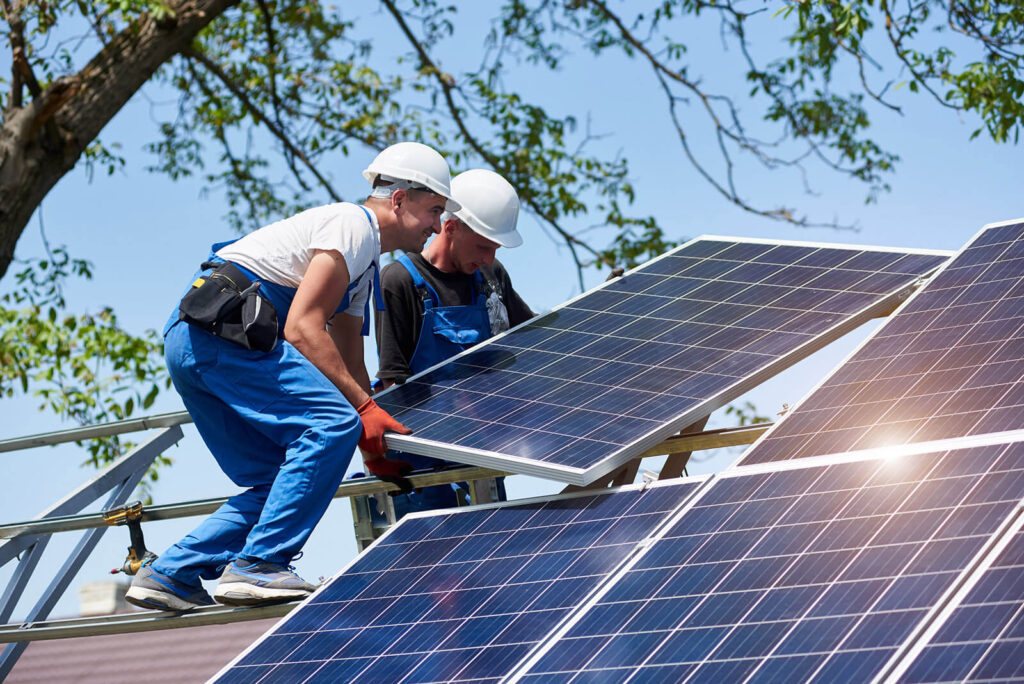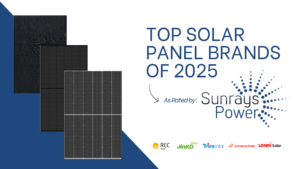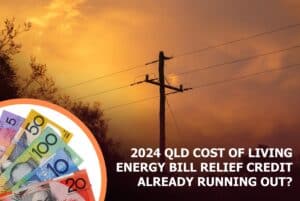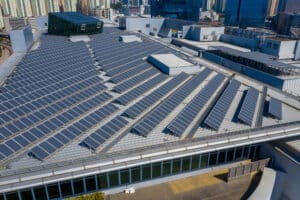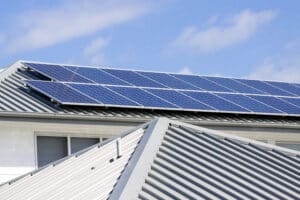Key Takeaways
- Solar panels help reduce your carbon footprint and lower electricity bills, making them a valuable investment.
- Different types of solar panels — HJT, TOPCon, and PERC — have unique features and efficiencies that cater to various needs.
- Consider roof space, sunlight exposure, and specific energy requirements when selecting solar panels for maximum benefits.
- HJT panels are the most efficient but pricier, while TOPCon offers a good balance, and PERC is the most affordable option.
- Proper installation and regular maintenance are essential for optimal performance, and professional help is recommended for longevity.
Shifting towards a greener future
Over the past decade, there’s been a significant shift towards renewable energy, particularly with solar panels becoming increasingly common. Solar panels not only reduce your electricity bills by up to 85% or even eliminate them entirely, they also reduce your carbon footprint, making them a smart investment for everyone. In this blog, we’ll explore the various types of solar panels available, highlighting their unique features and benefits to help you determine which option best meets your needs.
Understanding Solar Panel Types
Solar panels convert sunlight into electricity through a process called the photovoltaic effect. When sunlight hits the photovoltaic (PV) cells within a solar panel, it’s absorbed and transformed into electrical charges that can power your home or business.
Switching to solar energy provides numerous advantages, with cost-effectiveness standing out as a key benefit. By installing a solar panel system, homeowners can substantially lower their energy bills by generating their own electricity. Solar panels also lower your carbon footprint by harnessing the sun’s energy instead of relying on fossil fuels, contributing to a greener future.
Importance of choosing the right solar panel types
When it comes to solar energy, understanding the different types of solar panels available on the market is essential. The solar technology used in solar panels can quickly change, as better, more efficient models are released. Each type has its own unique features, benefits, and suitability for various situations. From TOPCon and HJT to PERC solar panels, we explore the defining characteristics of all three and where they are best used. Solar panel technology has significantly advanced in efficiency and safety compared to the monocrystalline solar panels sold years ago, alongside polycrystalline solar panels and thin film solar panels.
Selecting the right solar panels for your roof involves several key factors, including location, available roof space, specific energy needs, and the amount of sunlight your roof receives. These elements impact the effectiveness of your solar system, influencing both its footprint and potential energy bill savings. For instance, roofs that receive limited sunlight may benefit from high-efficiency panels, which can generate more electricity under challenging conditions. Larger roofs might opt for more budget-friendly options. Considering these factors is essential to maximising the benefits of renewable energy and ensuring an efficient solar investment.
TOPCon Solar Panels
The design of TOPCon solar panels involves a thin layer of silicon oxide applied to the back surface of the solar cell. This layer passivates the surface, preventing charge carrier recombination, which typically leads to performance losses. The structure allows for a “tunnelling” effect, enabling electric current to pass through the silicon oxide while minimising resistance.
Advantages
- Highly efficient: TOPCon solar cells, built on n-type technology, generally deliver higher efficiencies than traditional p-type cells. This results in greater energy yield, making them a smart choice for those looking to maximise their solar investment.
- Resilient: These cells feature a low-temperature coefficient, meaning they maintain their efficiency better in higher temperatures than conventional options. This characteristic is particularly beneficial in warm climates like Queensland where solar panels can experience overheating.
Disadvantages
- Potential UV-Induced Degradation: While TOPCon technology offers numerous benefits, it is still relatively new, and some evidence suggests susceptibility to UV-induced degradation (UVID). At Sunrays Power, the panels we install are vetted by the CEC and are designed to perform efficiently for long periods of time. With a linear power degradation expectancy of just 0.4% over those 30 years, UV-induced degradation won’t be an issue.
- Higher costs: The advanced structure of TOPCon cells may lead to more complex and potentially higher production costs than traditional solar cells, which could affect pricing.
Recommended applications
TOPCon solar panels are ideal for residential and commercial installations that require high efficiency and durability. Due to their high efficiency, they are commonly used for large commercial buildings that require large amounts of energy, or smaller residential homes that have tight usable roof spaces.
Our expert recommendation for a dependable TOPCon technology panel is Jinko, an award-winning quality panel that is the most purchased module brand among installers in Australia.
HJT Solar Panels
Heterojunction (HJT) solar panels utilise a three-layer system known as wafers, engineered to capture maximum light as sunlight penetrates each layer. These layers’ thin film and thin silicon wafers significantly boost efficiency by enhancing light absorption and generating more electricity, something that is looking to become the new industry standard in years to come.
Advantages
- High Efficiency: HJT panels are renowned for their superior efficiency in converting sunlight to electricity, often surpassing traditional panel types. These bifacial panels are able to absorb sunlight from the front and the back .
- Temperature Resilience: They exhibit a low-temperature coefficient, ensuring only slight efficiency decreases as temperatures rise.
- Low-Light Performance: These panels excel in low-light conditions, generating substantial energy even in less-than-ideal sunlight.
Disadvantages
- High cost: HJT solar panels are expensive due to their complex manufacturing process and high-quality materials. However, they are becoming increasingly common in the solar panel industry, and this price is expected to drop in the coming years.
- Fragile: These solar panels have a thinner design, making them more fragile than other types, however, installing them in Brisbane is still viable despite our frequent hailstorms. The HJT Panels we install at Sunrays Power are REC panels which feature additional reinforced materials for enhanced durability. In fact, we’ve installed over 80 REC Panel systems in the past year, and they’ve proven to be resilient, with no issues after hailstorms.
Recommended applications
These solar panels have a high conversion efficiency rate and can withstand high temperatures, making them the perfect option for any residential or commercial use in the harsh Australian climate. They are also one of the more compact solar panels, making them perfect for uses with limited roof space.
At Sunrays Power, we recommend, supply, and install LONGi Solar Panels, an HJT Solar panel with a record-breaking cell efficiency of 26.81%.
PERC Solar Panels
PERC (Passivated Emitter and Rear Cell) solar panels are an advanced type of photovoltaic technology designed to enhance efficiency and performance. This technology is similar to TOPCon but is an older technology and has been industry standard for some time. By incorporating an extra layer on the rear side of the solar cells, PERC panels can capture more sunlight and minimise energy loss.
Advantages
- Increased Efficiency: PERC technology enhances light absorption, resulting in higher energy conversion rates than standard solar panels, meaning more electricity from the same sunlight.
- Better Temperature Performance: These panels generally feature a lower temperature coefficient, allowing for improved performance in high-temperature conditions.
- Reduced Recombination Losses: The passivation layer minimises charge carrier recombination, enhancing overall energy output and extending panel lifespan.
- Lower Initial Cost: While the manufacturing costs of PERC panels are higher, installation costs are not. PERC panels are inexpensive to install here due to their status as a tried and tested technology. Many of our budget-conscious clients at Sunrays Power choose PERC panels, as they typically cost less than TOPCon or HJT panels while still offering strong performance.
Disadvantages
- Sensitivity to Light and UV Degradation: While generally robust, some PERC panels may be more prone to light-induced degradation, which can impact long-term performance.This is a general disadvantage of these panels in the solar industry. However, much like TOPCon panels, our panels are designed to perform at the highest standard for over 30 years, with only a 0.4% degradation rate.
Recommended applications
PERC solar panels are best suited for residential and commercial installations where space is limited and affordability is required. They are the more affordable, efficient option, making them great for households.
The experts at Sunrays Power recommend the REC Solar SolarEdge package for an easy setup and a top-quality PERC panel.
Comparing the Costs and Efficiencies
When choosing solar panels, cost and efficiency are key factors to consider to ensure you have made the right decision for your property.
Cost-effectiveness
HJT solar panels provide the highest efficiency and can capture sunlight from both sides, but they are complicated to make and tend to be more expensive. On the other hand, TOPCon panels are easier to produce and handle humidity better, but they are less efficient and don’t capture as much sunlight. PERC panels are the easiest to manufacture and are usually the most affordable option, but they offer the lowest efficiency among the three types.
Return on investment
The ROI varies for each type. HJT panels may cost more upfront but can lead to bigger savings in the long run due to their performance. TOPCon panels balance cost and efficiency, making them a solid choice for many users. PERC panels are a practical, budget-friendly option, and while they generate slightly less energy, our clients who choose PERC panels still see significant savings on their energy bills and return on investment.
Installation and Maintenance Considerations
Proper installation of solar panels is as crucial as selecting the right solar panel type. Seeking professional assistance and understanding the installation process for each panel is vital to avoid damage and ensure correct installation. Here’s an overview of how each type of panel is installed.
- HJT Panels: Fragile and complex; require careful handling and precise alignment for installation. The REC HJT panels we install come with extended warranties: 25 years for product and performance and 25 or 10 years for labour, backed by our certification as REC Certified Solar Professionals.
- TOPCon Panels: Simpler installation than HJT; professional setup is recommended for optimal performance.
- PERC Panels: Easiest to install, fitting standard mounting systems for quicker setup.
Maintenance tips
- Clean Regularly: Remove dust and debris with water from a hose that is not pressurised.
- Inspect for Damage: Check for cracks or loose connections. If you suspect a loose connection, please call your solar installer. Make sure to not touch it.
- Monitor Performance: Track energy output and address any significant drops.
- Check for Shade: Ensure no new shadows affect your panels.
- Schedule Inspections: Get professional checks every few years to ensure optimal function.
Choosing the right solar panel for your needs
The solar industry is experiencing a significant technological shift with the rise of TOPCon, PERC, and HJT panels. This trend indicates a movement away from traditional options like thin film, monocrystalline, and polycrystalline panels. Although these options are still recommended for many uses, Sunrays Power stays ahead of industry standards, offering these new technologies in our solar panel range.
These traditional solar power options garner various benefits and are still recommended today:
Monocrystalline solar panels
Monocrystalline panels are energy-efficient, durable, and compact, making them an excellent choice for homes with limited roof space.
Polycrystalline solar panels
Polycrystalline panels are cost-effective because they use silicon solar cells, making them the cheaper option. However, these panels require more space and are less efficient, which contributes to their lower price.
Thin film solar panels
Thin film panels work well in low-light conditions, and they aren’t impacted by high temperatures; their versatility makes them a great choice for residential homes across Australia.
By understanding each’s strengths, you can choose the ideal solution tailored to your specific energy requirements. Choosing the right type of solar panel technology enhances energy savings and contributes to a greener environment. By making an informed decision, you can enjoy the benefits of renewable energy while supporting sustainability efforts for the future.
Want more options? Find out which solar panel is right for you
For a personalised consultation tailored to your specific energy requirements and property, contact Sunrays Power today. Our team is ready to help you explore the best solar options that fit your needs. Let’s work together to find the perfect solution for you.
